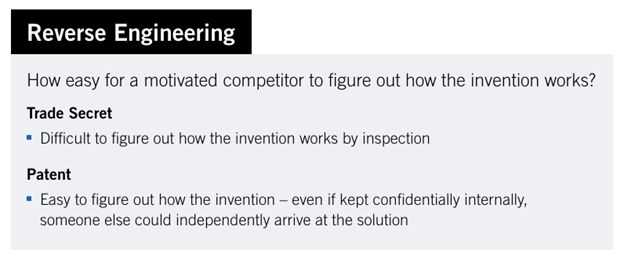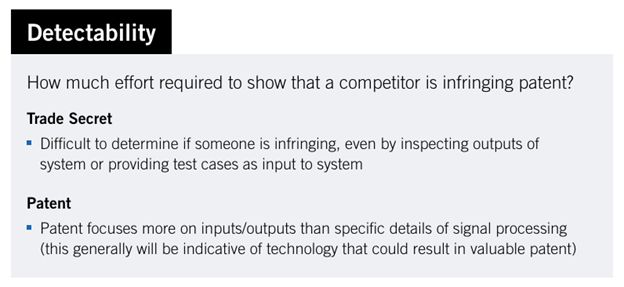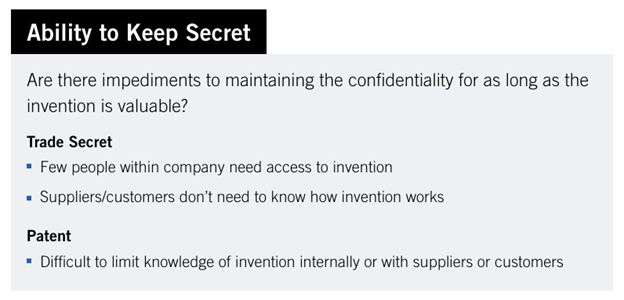- within Criminal Law, Government, Public Sector and Insurance topic(s)
Intellectual property protection is a critical pillar for establishing and maintaining competitive advantages. At the same time, it is important to strategically allocate resources to building a patent portfolio. This can be especially true for emerging companies, where spending on IP involves real tradeoffs with other business goals, and basic rules of thumb that larger companies can rely on to rest assured that they are making good decisions on IP spend, such as 1 patent per $1 million in R&D spending, are not useful. From a cost-benefit perspective, protecting a single invention worldwide can easily reach into the six figures, and so each patent needs to provide real, commensurate value by (1) deterring competitors from practicing the invention and (2) being enforceable through litigation in a cost-effective manner.
At a high level, a holistic IP strategy requires understanding how your innovations are integral to your business: understanding what makes your products and services better, faster and/or more valuable to customers, predicting what your competitors might do to meet their goals, and deciding if patent protection is worth the resource allocation. Trade secret protection—keeping ideas confidential so that you can go after other parties who acquire those ideas improperly, with the risk that if they acquire the ideas independently or through reverse engineering, then you have no recourse—can generally offer a less expensive alternative to still protect innovations where the value proposition for patent protection may not be as strong. Trade secret protection can require a relatively high initial cost to establish systems for maintaining secrecy, though this cost can be spread over many trade secrets once the systems are established.
This article outlines a decision framework using four key factors to help decide whether to protect innovations using patents or as trade secrets: how critical the technology is; how easily the technology can be reverse engineered; how easily you can figure out if someone else is using the technology ("detectability"); and how easily you can keep the invention secret.

Criticality reflects how important a particular invention is to success in the market: the more critical an invention is, the more important it is to file for patent protection. Criticality will be reflected by several interrelated characteristics, including the dollar value of the invention, how much demand there is for it, and how necessary the invention is to meet customers' needs. For example, if a technology-focused product can be sold with high margins, there is likely a critical invention underlying the technology that leads to the performance advantages that enable those margins, and therefore should be protected using patents. On the other hand, if there are many alternative approaches ("design-arounds") to a particular invention that can be implemented without sacrificing performance and/or at appreciably lower price points, then keeping the invention confidential will likely be more cost-effective than patent protection.

Reverse engineering generally refers to figuring out how a technology works, such as by "working backwards" through the technology (software, devices, etc.) to understand how different components work together and perform their functions. While certain technologies may have contractual or other restrictions on reverse engineering, reverse engineering typically provides an avenue to independently arrive at an invention, rendering trade secret protection ineffective. Therefore, the easier an invention is to figure out by reverse engineering, the more important it will be to protect using patents.

Enforcing a patent requires showing how a competitor infringes every element of at least one claim in the patent. This means that the more difficult it is to figure out if a competing product has a particular element (e.g., a structural feature; a function being performed by a component or by the product's code), the more difficult it will be to successfully enforce. As noted above, patent litigation costs are significant. Although the very first step of sending a cease-and-desist letter to an infringing competitor, by itself, may be relatively low cost, astute competitors will recognize that for the letter to be credible, you will need to have a strong enough infringement position to believe litigation will be successful.

In summary, the benefits of patents include preventing competitors during the limited patent term from using the protected invention and/or receiving royalties for competitor use, along with being a licensable asset to open new income streams, though the inventions must be made public and cannot be protected after the patent term is over. The benefit of trade secrets is that they don't expire while kept secret, but generally will only address situations where confidential information is used without permission. While trade secret protection can be a cost-effective alternative to patents—particularly in industries where there may be lots of employee movement between companies and thus cross-exposure to technologies—it will only be useful where effective confidentiality systems can be established. For example, the more easily you can limit the number of people who see the invention, such as by limiting exposure for each person or team to only a subset of the overall invention, the more reliable the trade secret protection will be.
Using these factors, a more intentional, strategic approach to IP protection can be established. This will allow you to reduce overall spend on IP while ensuring that your IP is a valuable competitive asset.
The content of this article is intended to provide a general guide to the subject matter. Specialist advice should be sought about your specific circumstances.




